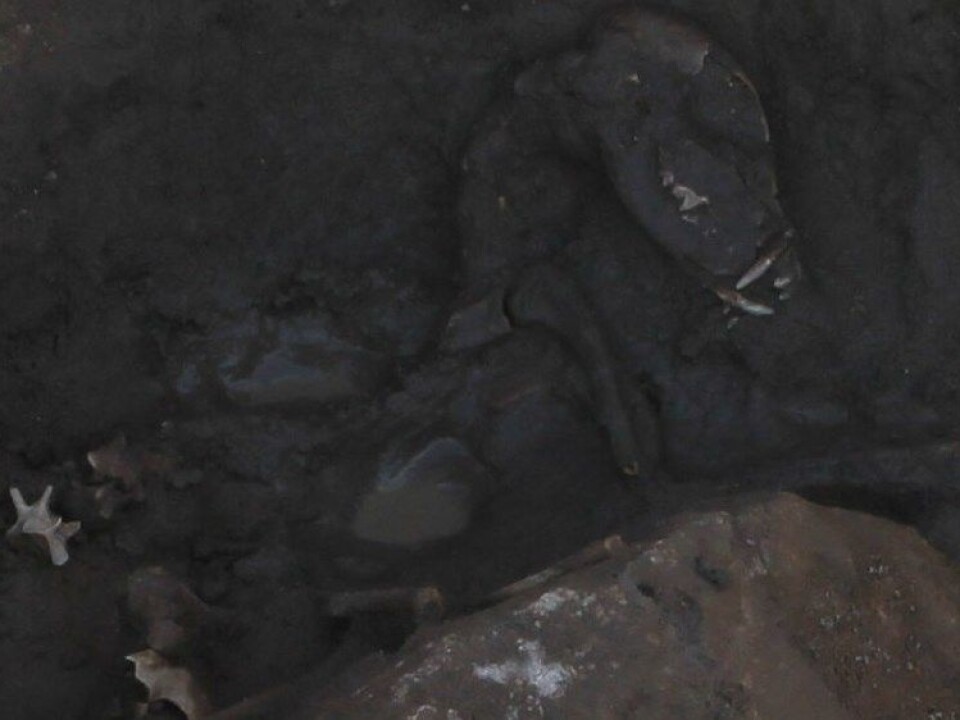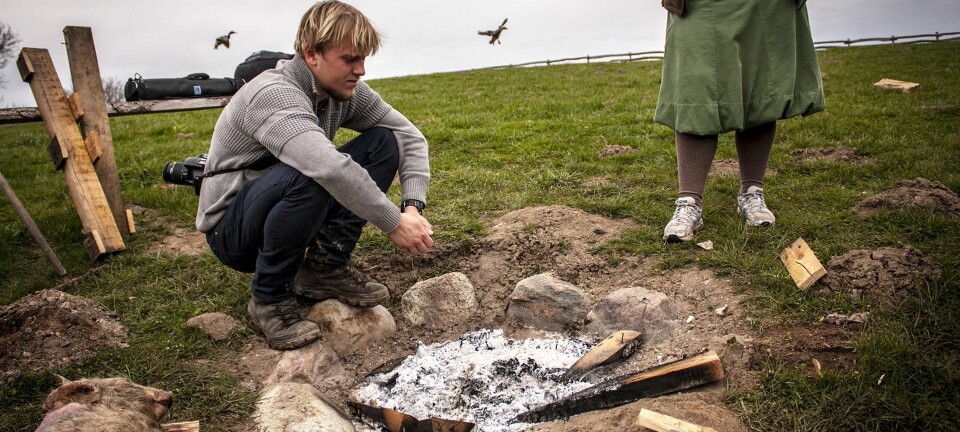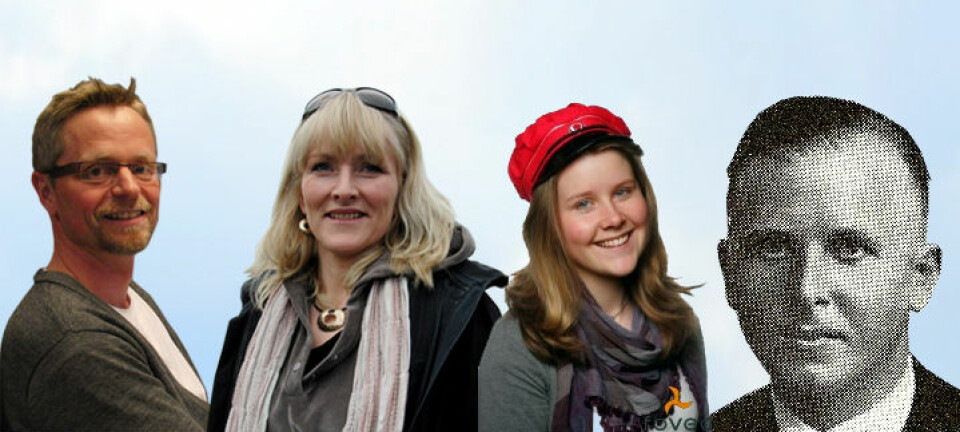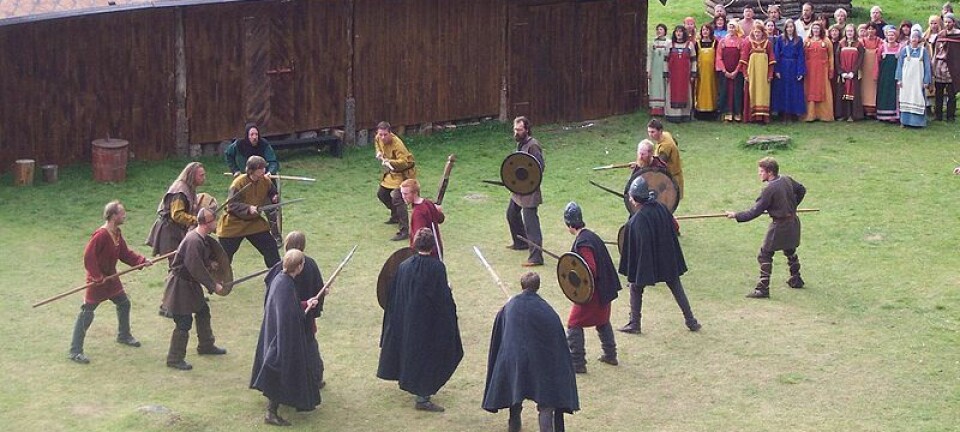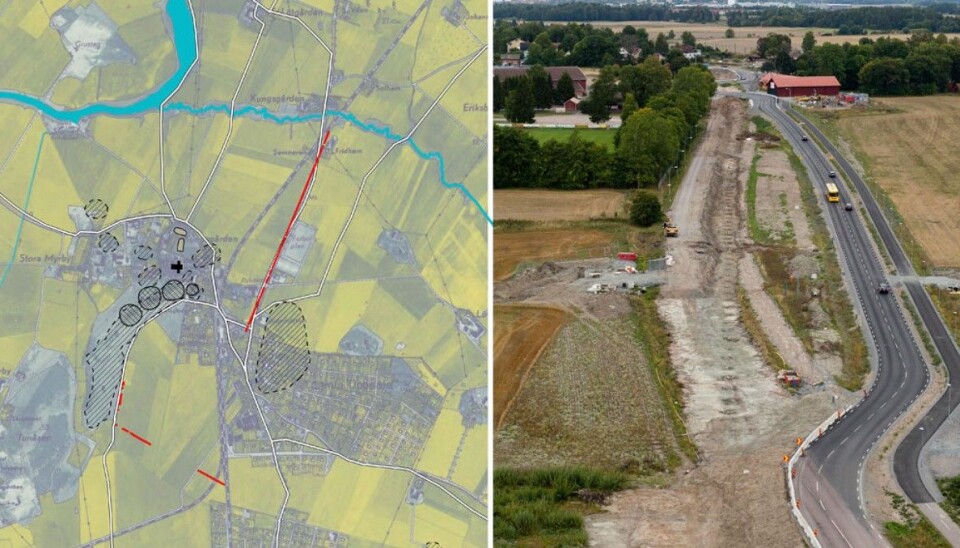
Huge ancient monument found in Sweden
Archaeologists have discovered a monumental structure with high wooden poles, dated at 400-500 AD in Uppsala, Sweden.
Archaeologists in Sweden have found two long rows of wooden post holes at nearly right angles to each other. One of the rows is a kilometre long and consists of 144 post holes. The other extends at least 500 metres. The holes are spaced every six metres and the rows are 500 metres apart.
“We think the wooden poles were high, perhaps over eight to ten metres. They have been easily spotted from a distance,” says the project leader of the dig, Lena Beronius-Jörpeland, an archaeologist with the Swedish National Heritage Board.
A newer version of such rows is found in Denmark, from the Viking era. But there it served as a defensive wall.
“As this is such a large tract of land, we don’t think these rows of posts would work well as protection. In those days they had castles which served that function, but they were much smaller. Maybe this monument had multiple functions,” said Beronius-Jörpeland to the Swedish newspaper Dagens Nyheter.
Connection with the royal burial mounds

The site is just a few hundred metres from a well-known landmark, the Royal Mounds [Kungshögarna]. These are from the decades around 600 AD and had significant functions for religion and trade.
The researchers are speculating about links between the monumental linear structures and the burial mounds. The area they are in is one of the most important known from the Swedish Iron Age.
“We know there was some sort of judicial court associated with the kings who are buried in the mounds. It’s tempting to speculate that this had something to do with the newly discovered monument. Maybe it was intended as a visual manifestation of power,” says Beronius-Jörpeland.
Inspiration from abroad
The excavation has revealed animal bones in some of the holes where pillars once stood. A puppy skeleton was dug out of one, which indicates that it was sacrificed when the post was erected or the construction was completed.
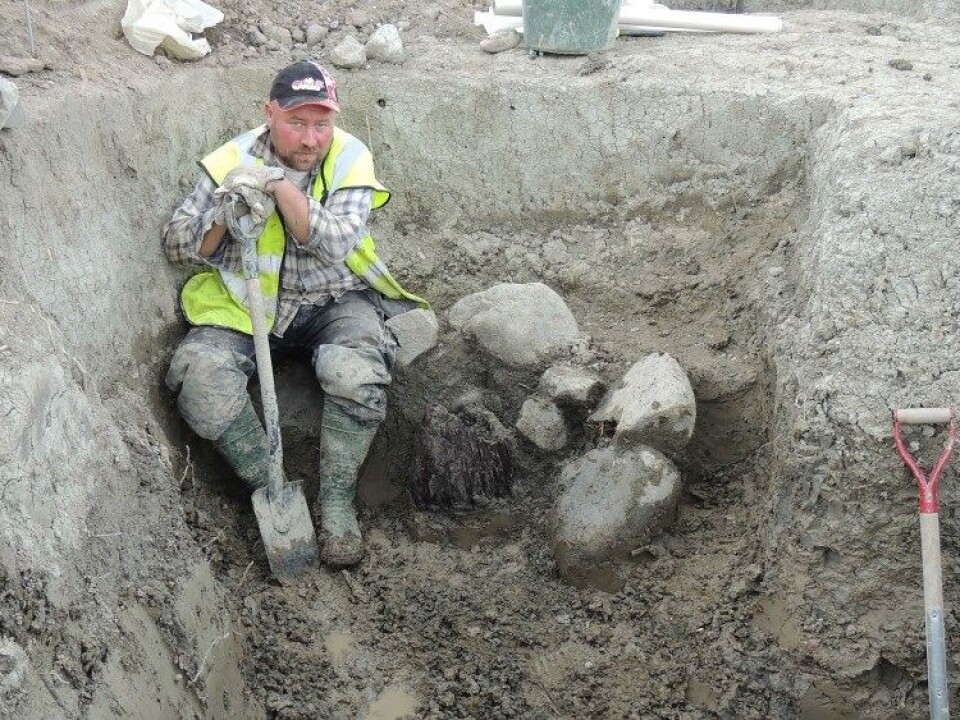
The excavation of the extensive monumental structure will continue as researchers seek information on possible similar constructions elsewhere in Europe or skirting the Mediterranean. The idea is to find out whether mighty leaders who ordered the construction in Gamla Uppsala got their inspiration from abroad.
------------------
Read the Norwegian version of this article at forskning.no
Translated by: Glenn Ostling
Related content
